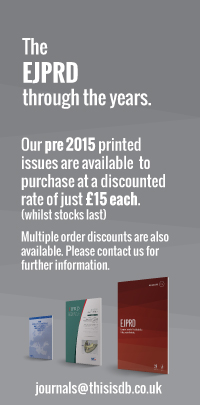European Journal of Prosthodontics and Restorative Dentistry
Improving the Accuracy of Dental Impressions: A Study of Tray Adjustments and Materials
Abstract
Objectives: This study evaluated the tensile bond strength of addition silicone impression material when used with custom trays featuring grooves and perforations, made from self-cure acrylic resin, visible light-cure (VLC) resin, and three-dimensional (3D) printed resin materials. Materials and Methods: Thirty-six custom trays were fabricated using self-cure acrylic resin (DPI Cold Cure), light-activated acrylic resin (Voco Individo Lux), and 3D-printed resin (Phrozen Aqua 4k). Each material group was divided into two subgroups based on retention methods: grooves and perforations. Tensile bond strength was tested using Digital Instron™ after applying tray adhesive (Coltene) and loading polyvinylsiloxane impression material (GC Flexceed). Data were analyzed using SPSS.
Results: Perforated light-activated acrylic resin trays showed the highest tensile bond strength (P<.005). Grooved trays had lower, but significant bond strength, while selfcure acrylic resin trays showed the weakest bond. Conclusions: Light-activated acrylic resin trays with perforations provide superior tensile bond strength. Perforations enhance retention more than grooves, suggesting that tray material and surface design significantly affect impression accuracy. Clinical Relevance: Perforated VLC resin trays offer superior bond strength and should be considered to reduce impression distortion in clinical practice.
Keywords
Retention
Overdenture
Attachment System
Bar-Clip
O-Ring
Authors
Suraj Naidu, Pankaj Dhawan, Shrimant Raman
Articles from this issue
 Free Access
Free Access No Access
No Access Full Access
Full Access


